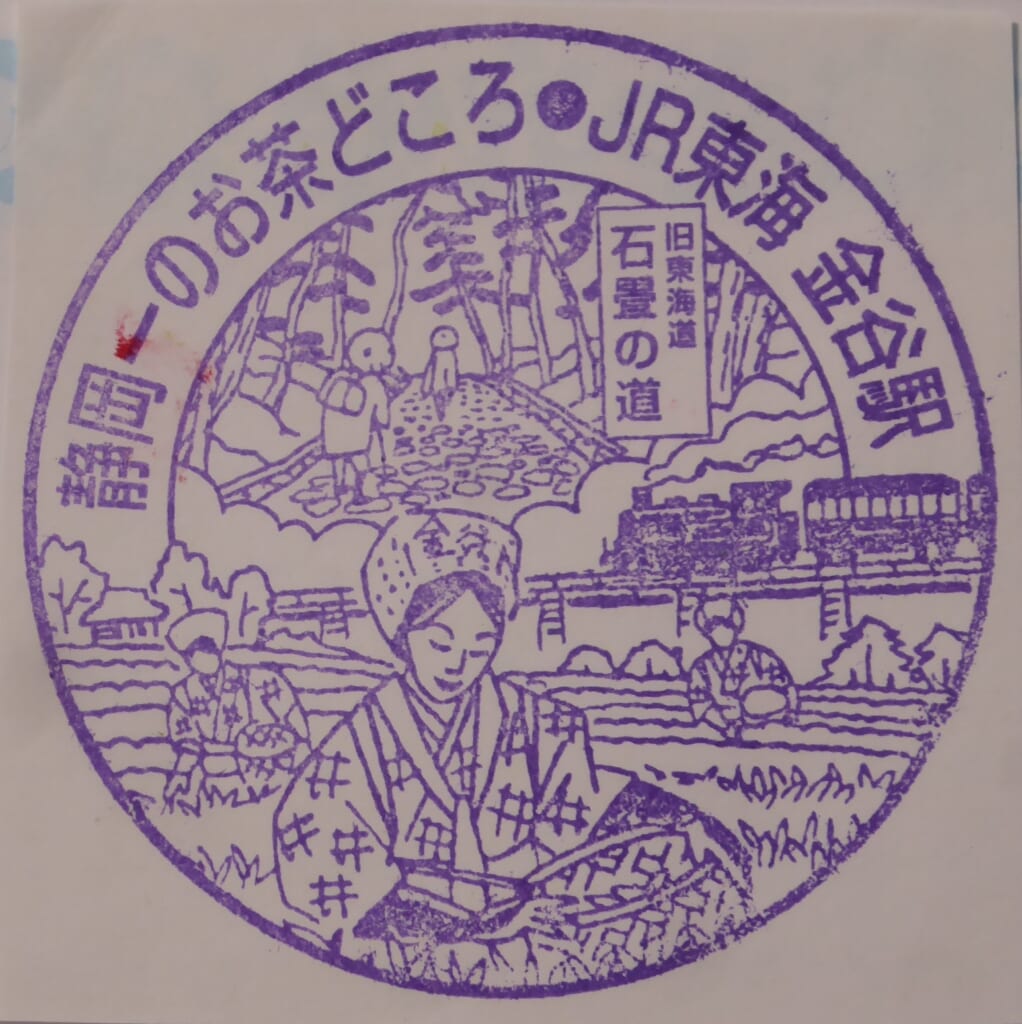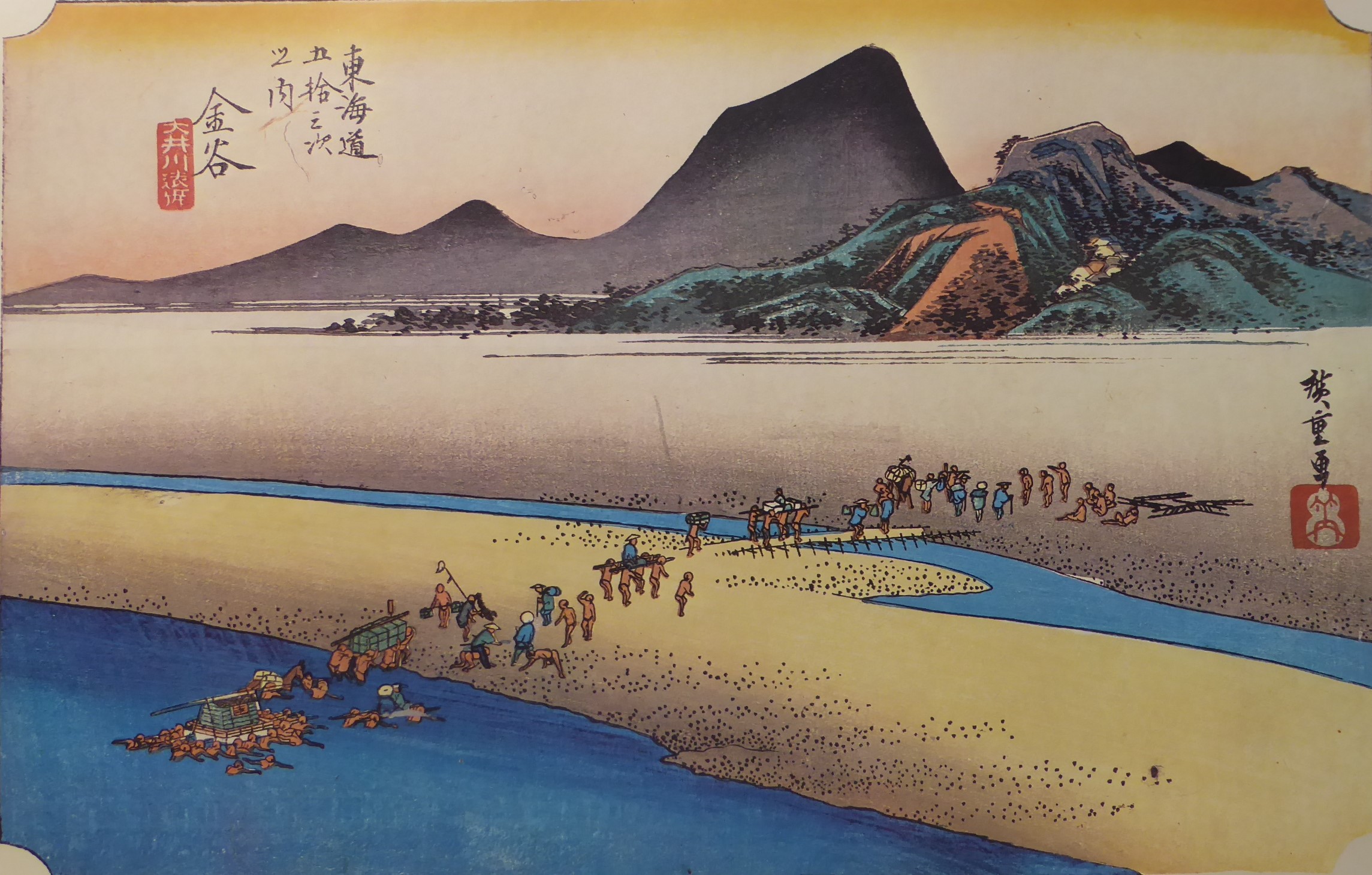Explanation of the Fifty-three Stations of the Tokaido 25 Kanaya
6.5km from Hizaka to Kanaya, 34°49’22″N 138°07’43″E
Kanaya is the 24th post station on the Fifty-three Stations of the Tokaido.
Currently Kanaya, Shimada City, Shizuoka Prefecture.
It is the easternmost post station in the province of Totomi.
During the Muromachi period, it was a small post station, and Kikugawa was more prosperous at the time.
It became a full-fledged post station after it became one of the main stations on the Fifty-three Stations of the Tokaido.
Kanaya is divided into two towns, Kanaya Honmachi and Kanaya Kawaramachi.
Like the other post stations, Kanaya Honmachi served as a bale-carrier, while Kawaramachi served as a wading agent and facilitator for crossing the Oi River.
It is located on the right bank of the Oi River (Kyoto side), and is a narrow place with the Makinohara Plateau looming close by.
When crossing the Oi River was prohibited due to high water levels, travelers heading down to Edo were stranded, and like Shimada-juku, Kanaya-juku was bustling like Edo.
A wooden bridge called Hachikenyabashi spanned the eastern entrance to Kanaya-juku.
Kanaya-juku did not have a pair of square gates, which were usually placed on the left and right of the entrance to an inn.
The bridge played that role.
On both sides of the road from the bank of the Oi River to this bridge were lined with pine trees for about 1 cho 50 ken.
After crossing the bridge, there were buildings such as the river meeting hall, a guardhouse for river-crossing laborers, a notice board, and a notice board.
The center of the inn is about 15 houses west of Kawaramachi.
Kanaya-juku was 16 cho 24 ken long from east to west, with a population of 4,271 people and 1,400 houses.
There were three honjin inns, one wakihonjin inn, 51 inn, and other lodgings for staying overnight.
There were river crossing facilities such as Kawai-sho, and the number of laborers and horses always kept at the post town was 155 laborers and 100 horses.
In addition, the post town suffered from frequent floods.
These were a heavy burden on the town.
Along the road, there is Shin-Kanaya Station on the Oigawa Railway, where a steam locomotive runs, the Kawagoe Museum, and the grave of Nihon Saemon.
The remains of Sazukaya Honjin, now a bookstore, the remains of Kashiwaya Honjin in front of the agricultural cooperative, and the remains of Kanaya no Ichirizuka convey the atmosphere of the post town.
The history of river crossing at Kanaya-juku is displayed in the park.
① “Hoeido version”
This depicts the crossing of the Oi River as seen from the Kanaya side.
The group crossing the river is drawn small.
The movements of each guest and laborer are depicted in great detail.
After crossing, the laborers are tired and lie down to rest.
This conveys the hardships of crossing the river at that time.
The village visible on the right side of the mountain is Kanaya-juku.
②”Gyousyo version”
A close-up depiction of a ferry crossing the river from a low vantage point.
In the foreground are sumo wrestlers crossing the lotus platform on their way to Shimada-juku.
In the background is a gorgeous ferry procession of feudal lords heading to Kanaya-juku.
The sandbar in the middle adds variety to the flow of the river.
③”Reisho version”
A composition looking down on the Oi-gawa River from the mountains.
It expresses the size of the Oi-gawa River.
④ “Hokusai version”
This depicts travelers heading across the river from Kanaya-juku.
The size of Mt. Fuji is exaggerated.
⑤ “Travel image”
JR Kanaya Station.
The remains of Kashiwaya Honjin.
The stone-paved entrance to Kanayazaka Hill.
⑥ “Stamp image”
A stamp from JR Kanaya Station.
Hoeido version

Gyousyo version

Reisho version

Hokusai version
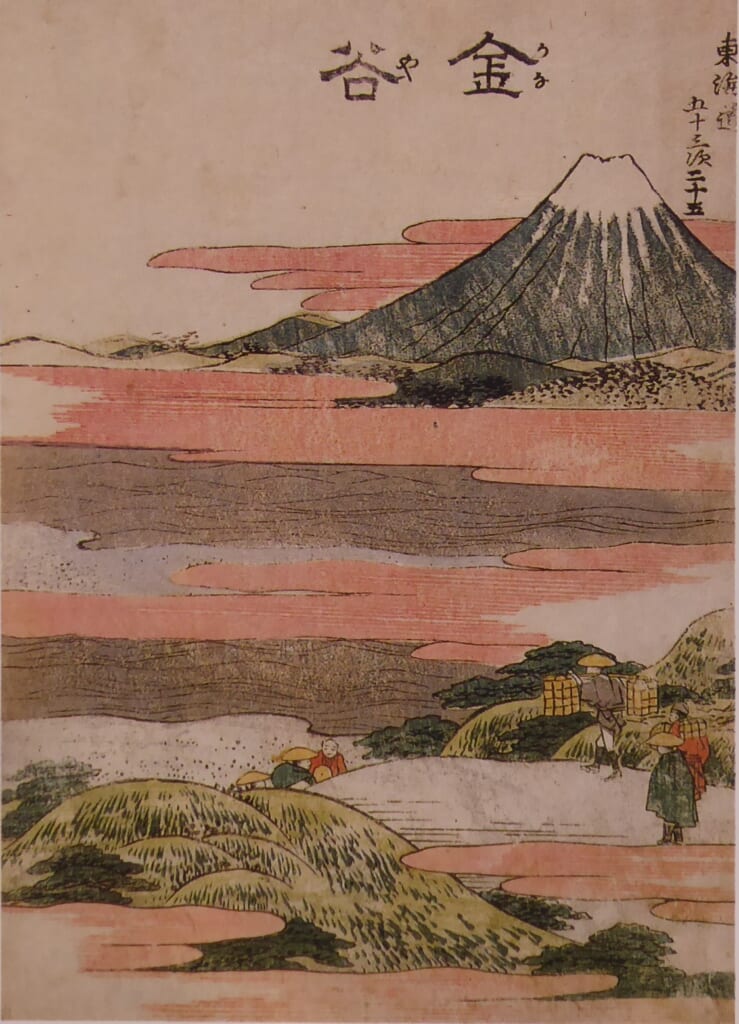
Travel image
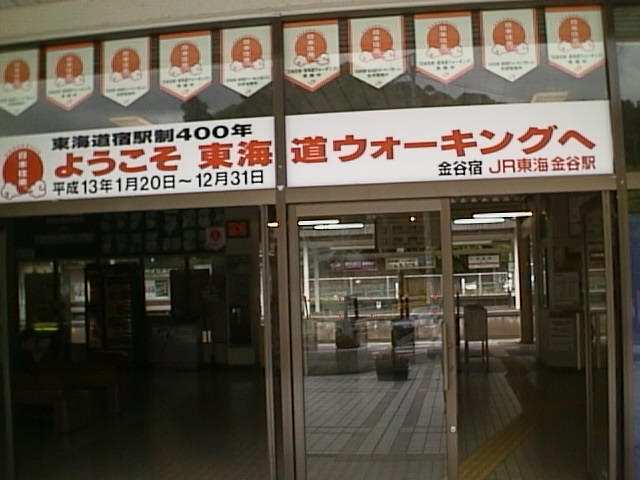

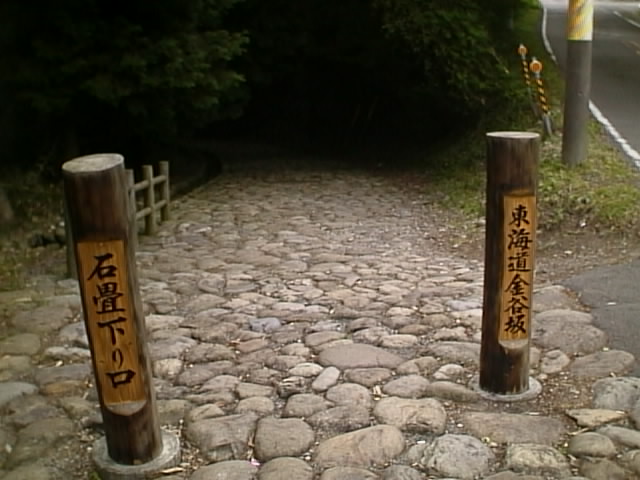
Stamp image
